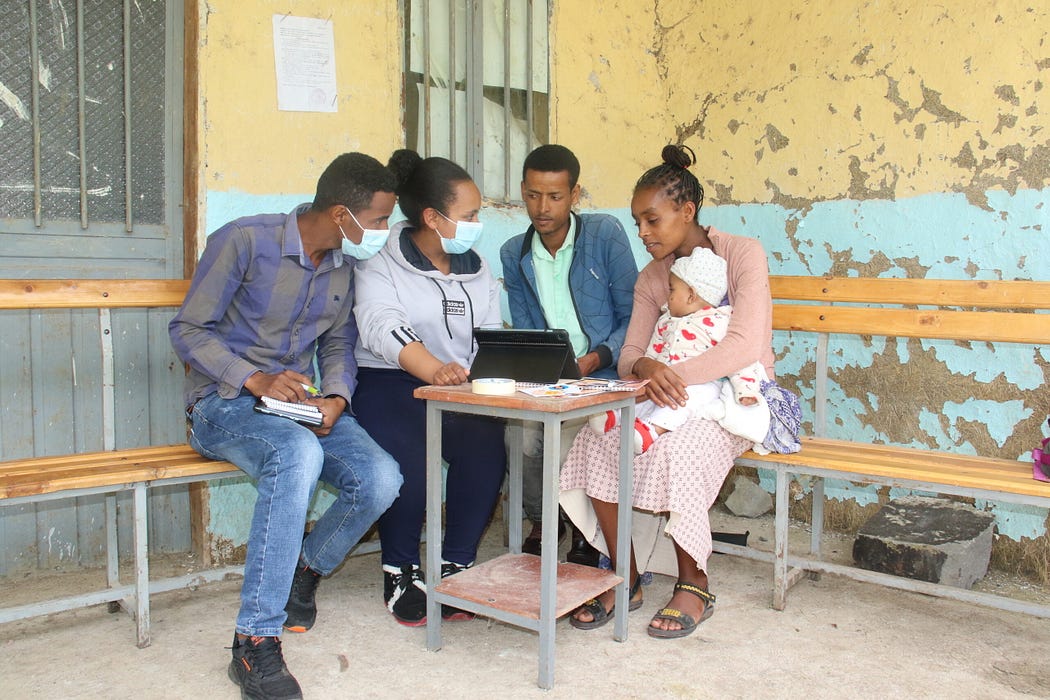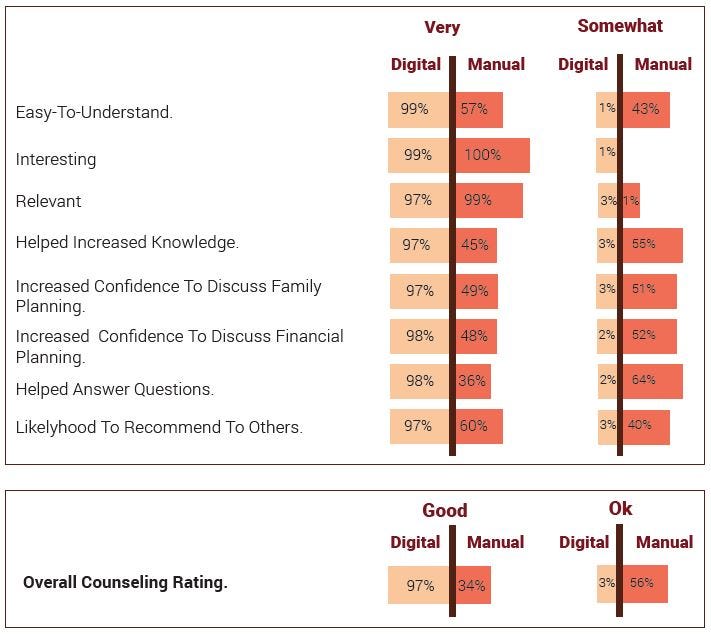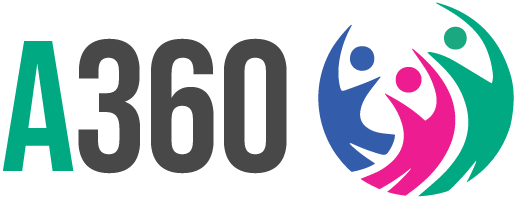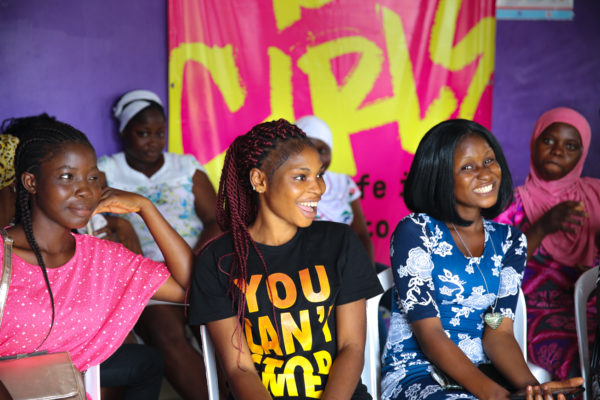By Fana Abay, Marketing and Communications Director, PSI Ethiopia
Health systems are often not designed to support women and girls in exercising their sexual and reproductive health rights fully. This is especially true for women in rural areas and low- and middle-income countries. According to DHS 2016 in Ethiopia, four out of five girls have a child before their 25th birthday – and before understanding the financial implications. PSI Ethiopia seeks innovative, person-centered solutions to enable women, adolescent girls, young women, and couples to make free and informed decisions about their sexual and reproductive health.
In line with the Federal Ministry of Health’s prioritization of digital solutions, PSI Ethiopia is digitizing Smart Start, a proven tool for counseling adolescent girls, young women and couples in Ethiopia about contraceptive counseling. Smart Start is implemented through community-based Smart Start Navigators (SSNs) who counsel and refer interested clients to Health Extension Workers (HEWs) or health providers in Marie Stopes International-operated clinics for further contraceptive counseling and services, including the provision of contraceptive methods.
Conducted through the Global Affairs Canada-funded project Owning Their Future, the digital extension of Smart Start aims to identify and address the communication and operational challenges that health providers, community mobilizers — such as SSNs and HEWs — and clients face when interacting with the tool. Digitization offers the opportunity to deliver content interactively and engagingly. It increases message consistency and improves counseling and pre-counseling services to help clients and couples make informed and confident financial and contraceptive counseling decisions. Learn below how we designed and refined the digital Smart Start tool and the impact it is having on clients and providers.
A USER-FRIENDLY DESIGN APPROACH
True to Smart Start’s roots, the digital guide was developed using a human-centered design approach similar to the manual counseling tool. We gathered insights from clients and couples who use reproductive health services and the healthcare providers who provide those services. The following insights informed our digital design:
- Clients have different counseling needs — depending on their background, economic status, age, and desires.
- The quality of contraceptive counseling varies; thus, clients need more detailed information about method side effects and their management.
- Clients want tailored contraceptive counseling recommendations and decision support.
- Healthcare providers need a flexible tool that promotes dialogue and interaction and meets the diverse needs of their clients.
- Healthcare providers need a tool that makes their work easier, faster, and of higher quality.
SMART START DIGITAL TOOL PROTOTYPES AND LEARNINGS
Leveraging these insights, we quickly and inexpensively created ‘low fidelity’ prototypes using paper, simple videos, and sketches to create real-world scenarios to validate our hypothesis and test our ideas’ usability, appeal, and relevance with healthcare providers and clients. We learned that both providers and clients were satisfied with the idea of the digital Smart Start counseling tool.
Providers and clients recommended that visuals show real-world scenarios and that videos with testimonials depict real people instead of animations. Clients wanted diverse character and language options to represent them and their region or cultural background. We learned that clients enjoyed personalized counseling components of the digital tool that asked first-person prompts (in videos and voiceovers) and were adaptive and flexible in their responses, so they receive the most personalized and relevant information. Clients chose to engage with interactive games, quizzes and additional learning exercises. Logistically, providers and clients asked for simple visuals and interactions with minimal text, as well as audio options for all text content – to improve access for people of all reading levels.

With these learnings, we refined the Smart Start Digital Guide design concept and product development. Our creative communication and app development team developed Smart Start’s minimum viable product (MVP), an early version with sufficient basic features including various screen designs, multi-media content (video, animation, audio, etc.), a simple consumer-facing app, and analytics. We tested the Smart Start MVP with potential users to identify any challenges or required changes to app functionality, features, and contents.
During the testing phase, we learned that healthcare providers were comfortable using the digital job aid, with the exception of some features like technical and screen adjustments – preferring simplicity in design and navigation. We learned that both client and provider liked that the visual, video, and audio contents were designed for a target audience regardless of literacy levels. Audio content enabled consistent counseling messages, as it was intended, and clients were impressed by the music and videos. Similarly, clients were happy and engaged during the digital counseling and liked that the avatar they chose reflected her individual needs and circumstances. Clients liked the app that modeled positive husband behaviors and communicated the importance of contraceptive counseling with their husbands. We found that additional personalized contraceptive counseling content – like the section addressing communication with husbands – helped girls leave the session feeling informed and confident.

INTRODUCING THE SMART START 2.0
The Smart Start 2.0 app was created by combining all learnings from healthcare workers and client insights after multiple prototype testing and interactions. The complete final product offerings are laid out below.

The pilot results indicate that the digital tool is more engaging, interesting, informative, and desirable. Both clients and healthcare providers find it easier to use and report higher satisfaction levels. Use of the digital tool resulted in higher rates of method uptake than the manual Smart Start counseling tool (74% vs. 64%)
Clients who received counseling with the digital Smart Start tool reported higher rates of understanding, had higher levels of unprompted recall, and reported higher levels of satisfaction than those who received counseling with the manual counseling tool. Furthermore, clients who received counseling with the digital tool also reported higher levels of confidence talking to their spouse about contraceptive counseling and financial planning, and in their knowledge after the session.
Smart Start Navigators found the digital tool easier to use and were more confident using the tool, were more satisfied with the tool, found it easier to connect with clients, found it easier to deliver a consistent message, found it less complicated, and rated the quality of their counseling higher. When considering the client experience, SSNs who used the digital tool reported their tool being more engaging, memorable, and enjoyable to clients.

WHAT IS NEXT?
We will continue to monitor use of the Smart Start digital counseling tool and make adaptations based on learnings and client feedback. We also plan to expand the scope of the tool to incorporate topics related to gender-based violence, safe abortion care, post-abortion care and COVID-19. Our objective is to reach at least 50,000 new clients in Ethiopia through the Smart Start digital counseling tool.
For more information on the Smart Start tool and its impact in Ethiopia: https://a360learninghub.org/countries/ethiopia/





